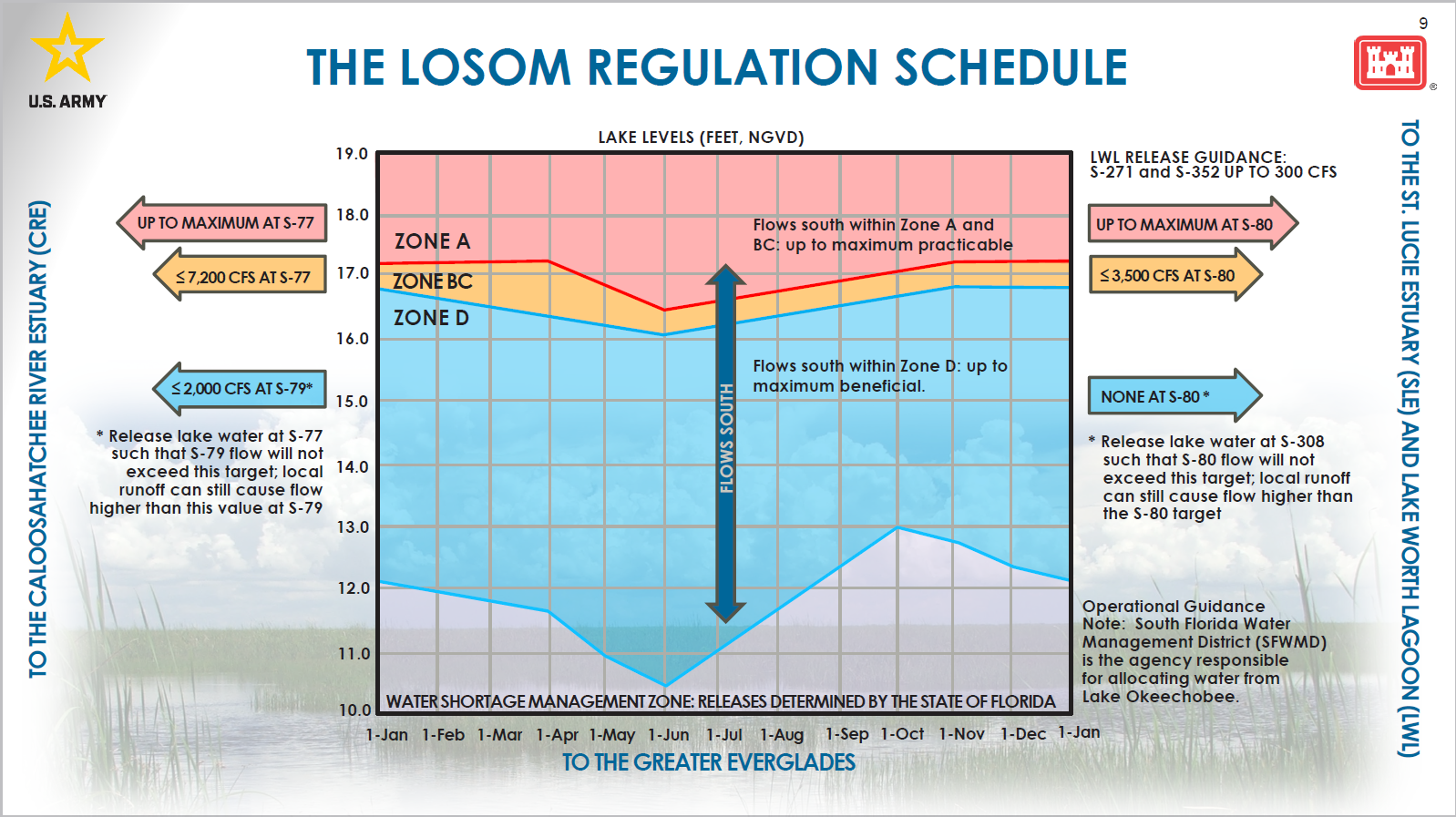August 13, 2024 marked a significant milestone in our ongoing efforts to protect and enhance the health of our estuaries—the implementation of the Lake Okeechobee System Operating Manual (LOSOM).
LOSOM is the blueprint the United States Army Corp of Engineers (USACE) will use to manage the operations of Lake Okeechobee starting today. At Florida Oceanographic we advocated for a plan that would eliminate damaging Lake O discharges to our coast. With your help, we succeeded! LOSOM represents a careful compromise, designed to address the complex water management needs of the entire South Florida Water Management District (SFWMD), while considering the diverse interests of all parties involved.

With LOSOM now in place, we are optimistic about the changes it will bring to our coastal community. By maximizing flexibility, it will minimize detrimental discharges and allow more responsive water flow management. Without high volume Lake O discharges, we anticipate water quality and ecological conditions in the northern estuaries to improve dramatically. This is a critical step towards restoring the health of the St. Lucie Estuary and the Indian River Lagoon, one that could not have been achieved without the dedication and support of our passionate community.
As we move forward with the implementation of LOSOM, we will be monitoring progress and compliance as we remain committed to protecting our estuaries and continuing our fight to send water south to the Everglades.
